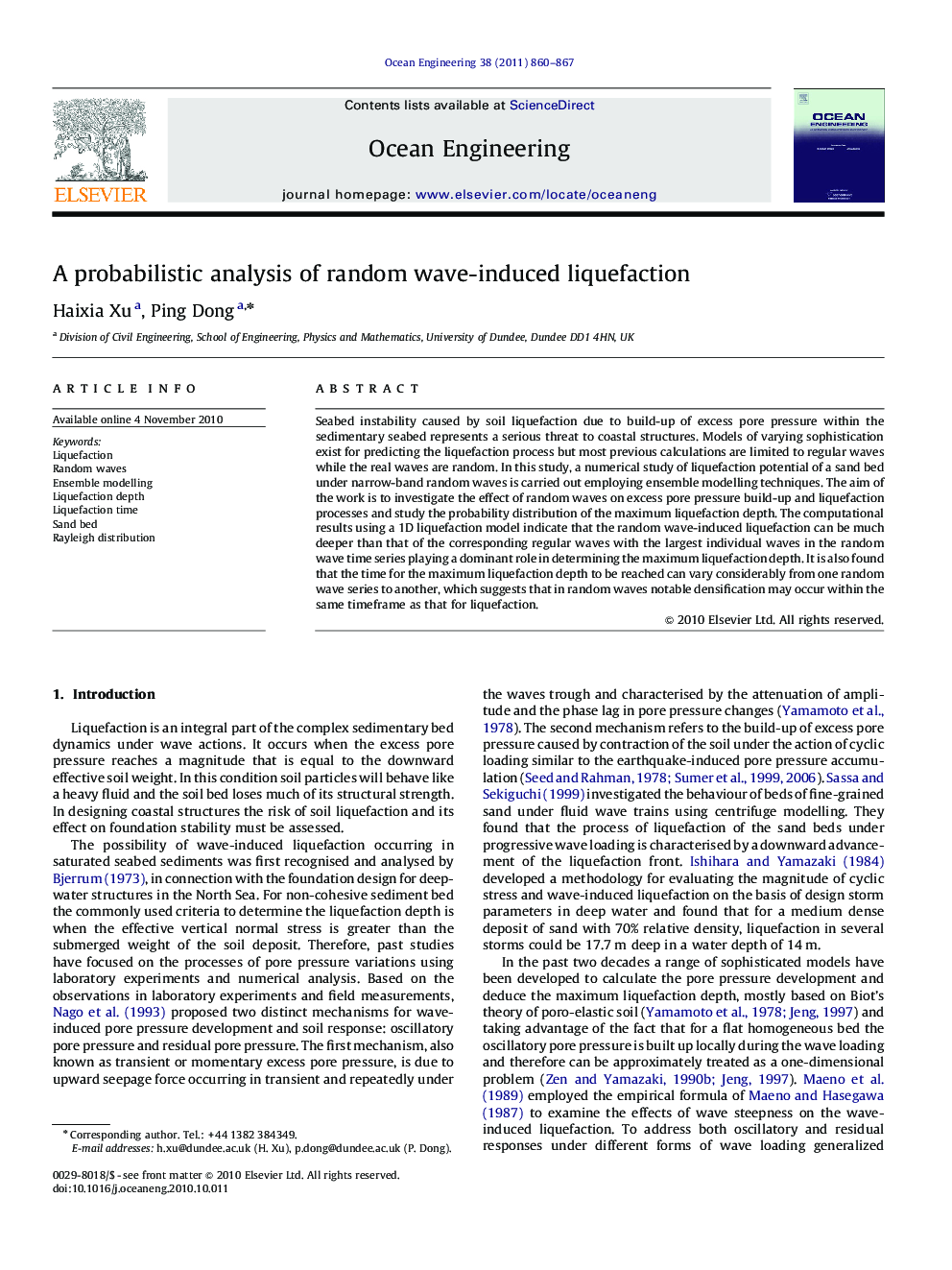| Article ID | Journal | Published Year | Pages | File Type |
|---|---|---|---|---|
| 1726426 | Ocean Engineering | 2011 | 8 Pages |
Seabed instability caused by soil liquefaction due to build-up of excess pore pressure within the sedimentary seabed represents a serious threat to coastal structures. Models of varying sophistication exist for predicting the liquefaction process but most previous calculations are limited to regular waves while the real waves are random. In this study, a numerical study of liquefaction potential of a sand bed under narrow-band random waves is carried out employing ensemble modelling techniques. The aim of the work is to investigate the effect of random waves on excess pore pressure build-up and liquefaction processes and study the probability distribution of the maximum liquefaction depth. The computational results using a 1D liquefaction model indicate that the random wave-induced liquefaction can be much deeper than that of the corresponding regular waves with the largest individual waves in the random wave time series playing a dominant role in determining the maximum liquefaction depth. It is also found that the time for the maximum liquefaction depth to be reached can vary considerably from one random wave series to another, which suggests that in random waves notable densification may occur within the same timeframe as that for liquefaction.
